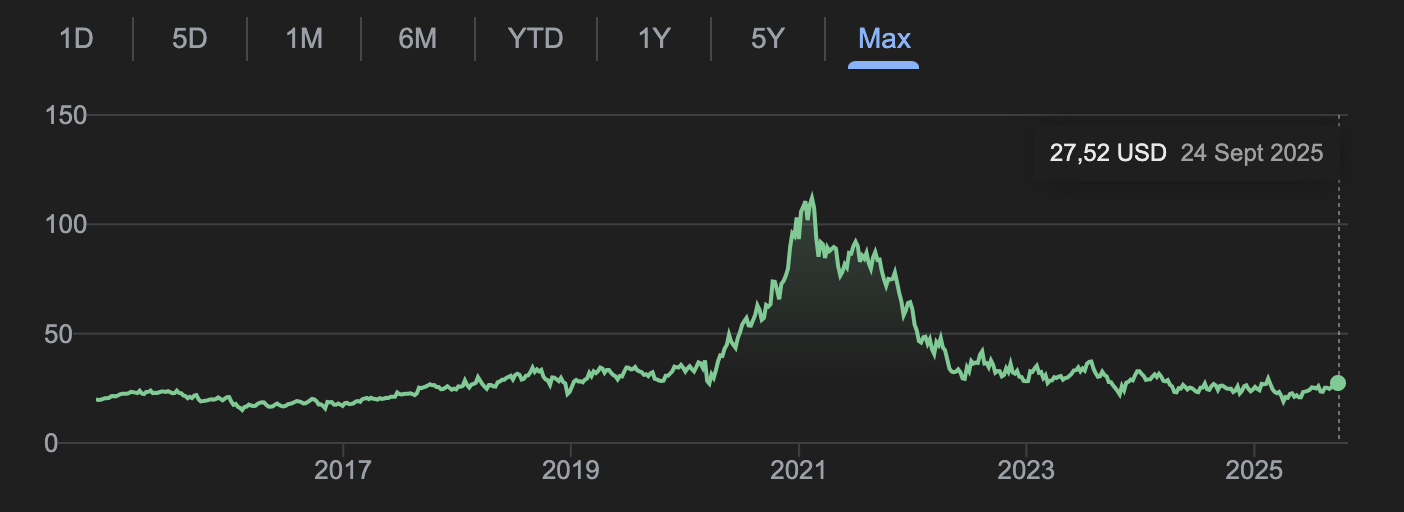Execution Memo No. 005
123% YTD; Extreme Volatility; Biotech Takes the Lead 24.09.2025
In this series I cover what I buy and sell; essentially blogging my investing journey in real time. Since the last memo a number of small shifts have taken place. Last week I exited my NBIS options with a 36% gain, and this week the adjustments continued; with moves in Tempus AI, new biotech bets, some scaling in Lyft, and fresh thoughts on Haypp.
Tempus AI Gains and Losses
Currently I hold both stock and long-dated LEAPS in Tempus AI. Most of the expiries are more than a year out, with some reaching close to two years. This wasn’t the case before Monday; back then I had 135 Jan ‘26 calls, bought at 2.66 USD and sold on Monday for 6.55 USD. The timing was extraordinary: the stock jumped nearly 10% on FDA approval news before fading lower by the close. That move allowed me to lock in a very strong gain and rotate into longer-dated LEAPS.
The result is a balanced position, roughly half stock and half LEAPS. My current view is that while Tempus looks expensive and could easily correct in the short term, I have a hard time seeing it lower by 2026–27 if execution continues and acquisitions keep adding to their data edge. I believe a PLTR-type moment is coming for this stock if no major negative surprises occur; for example, insider selling from the CEO.
Tempus AI remains my highest-conviction name in the AI-hypercharged healthcare and biotech sector, though it’s not my only bet.
The Biotech Rotation
As I’ve written before, I’ve been watching the biotech sector closely. About a month ago I ordered nearly every biotech investing book I could find on Amazon. I’ve read multiple books on CRISPR-Cas9 in the past, but understanding the science and understanding the investing logic of the sector are two very different things. Having now finished two dedicated biotech investing books, I feel like I have a bit more of a touch; but I’m by no means an expert yet.
So here’s what I did: I started with small introductory positions, with the intention of adding as conviction builds. The main question I’m grappling with now is the difference between prime editing and the original Cas9 method. Prime editing is newer, with pipelines still further away, but the potential is huge once the science matures. Cas9-based solutions, meanwhile, are already in phase 3 and in the market in CRISPR Therapeutics’ case.
I believe we’ll see incredible hype in the coming years as these technologies advance and investors catch on. Right now biotech stocks remain depressed; just look at Cathie Wood’s ARKG fund to see how far valuations have fallen from 2021 levels. To me, this looks like the early innings of a rotation back into biotech.
Recursion Pharmaceuticals
I’ve written about RXRX before, but this time I decided to add a small position. It’s a highly speculative buy, built on the possibility of a future where silica-based biological modeling becomes reality. The idea is simple but transformative: if we can simulate cells in silico, we could skip major parts of clinical trials and compress drug development timelines by years.
Keep reading with a 7-day free trial
Subscribe to Emil Hartela Investing to keep reading this post and get 7 days of free access to the full post archives.


